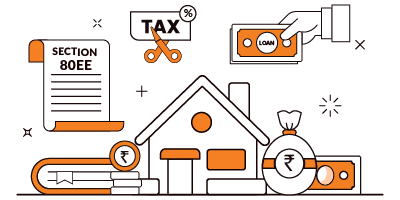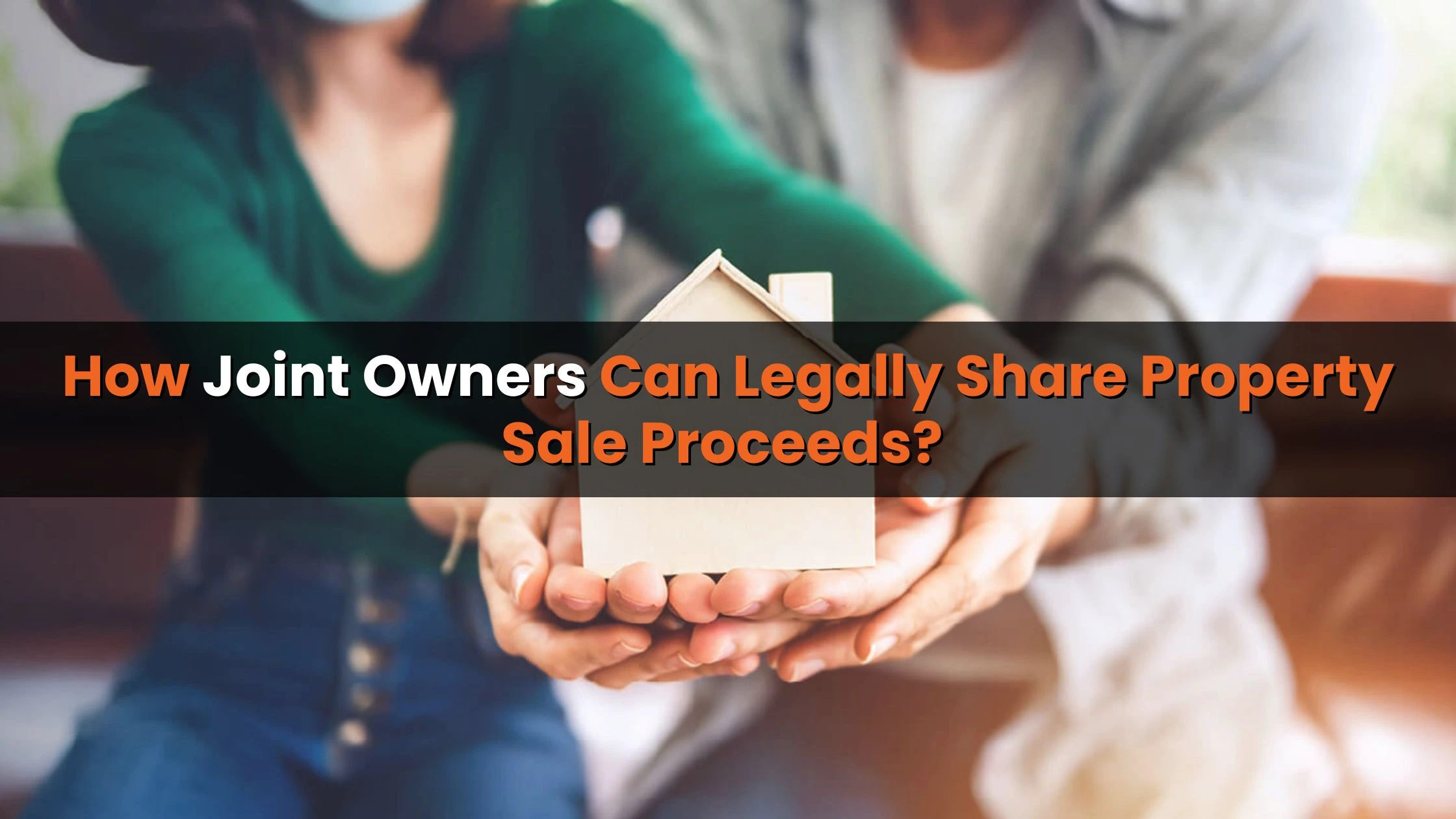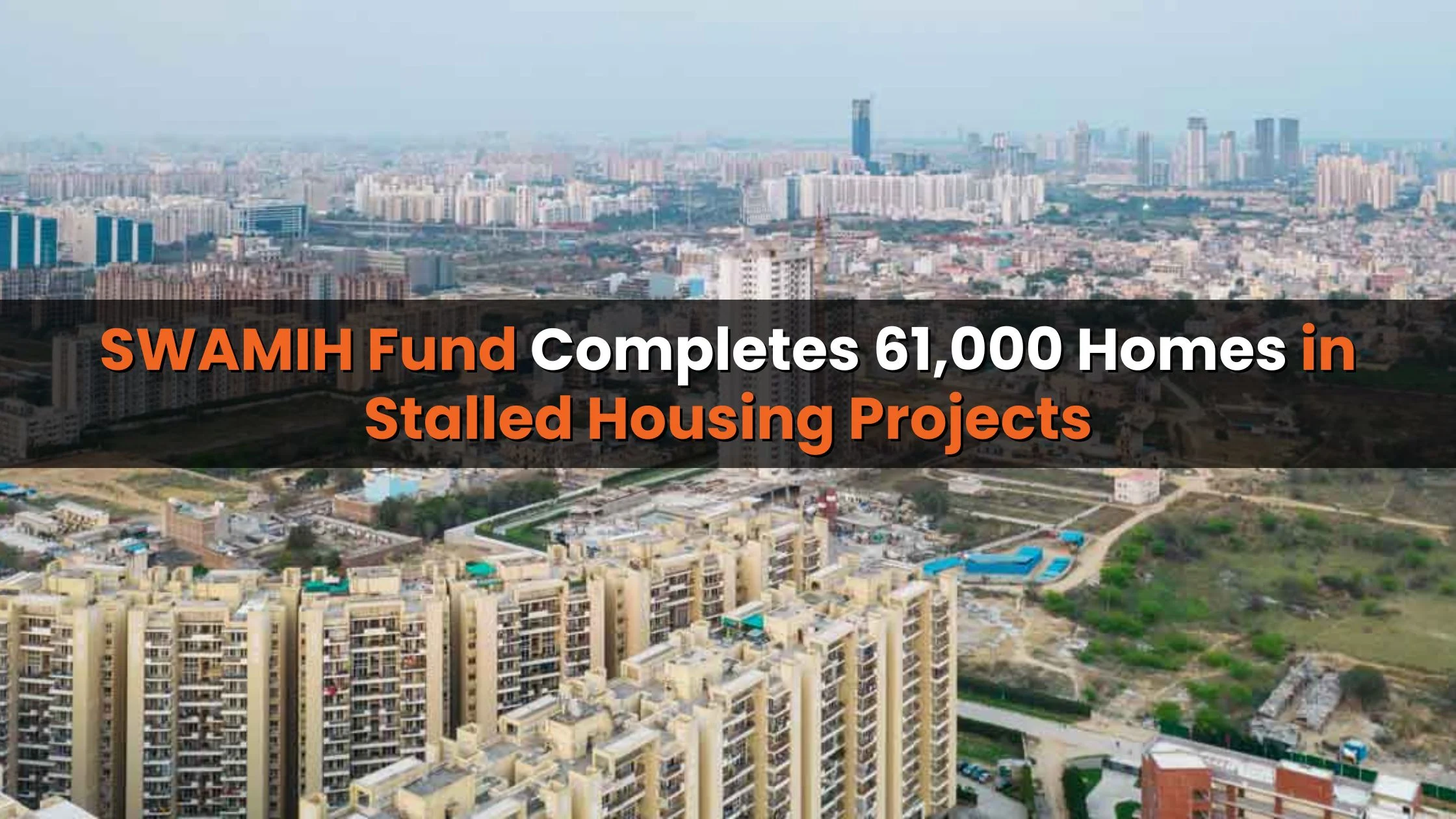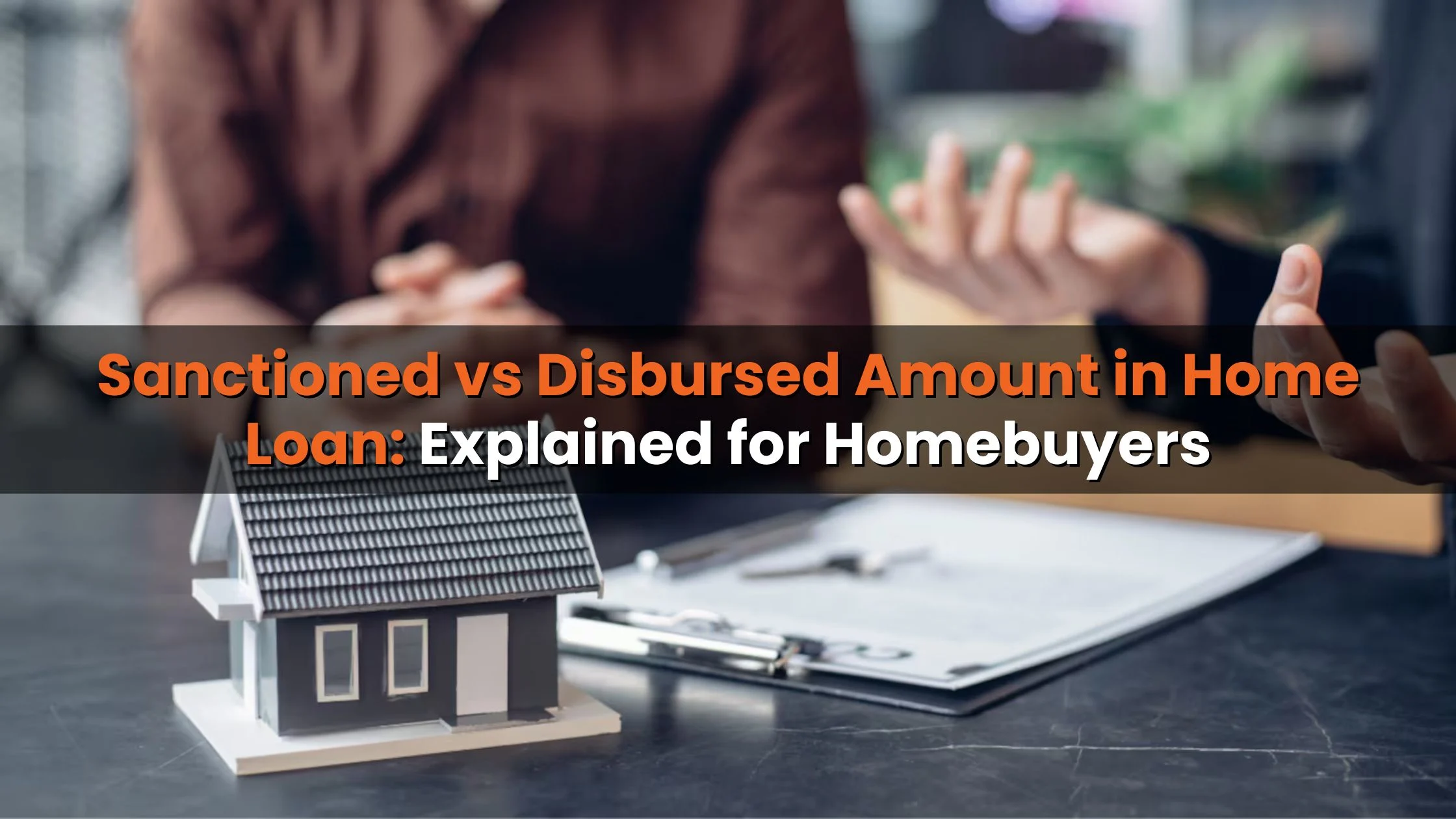Table of Content
Section 80EEA of the Income Tax Act in India provides a tax deduction of Rs 1.50 lakh on the interest payment of home loans for first-time homebuyers who are investing in affordable properties with the assistance of a home loan.
Section 80EEA: Background
Section 80EEA was introduced by finance minister Nirmala Sitharaman in the 2019 Union Budget to give a boost to the Centre’s Pradhan Mantri Awas Yojana (PMAY). The section was launched in the 2019 Budget. The Section 80EEA deduction is over and above the Rs 2 lakh deduction limit allowed under Section 24 (b).
Section 80EEA of Income Tax Act: Text
In the computation of the total income for an individual who is not eligible to claim a deduction under section 80EE, there is a provision for deducting interest payable on a loan obtained from any financial institution for the purpose of acquiring a residential house property. This deduction, as per the stipulations of this section, is subject to a maximum limit of one lakh and fifty thousand rupees. It is applicable for the assessment year commencing on April 1, 2020, and for subsequent assessment years.

Price and carpet area limit under Section 80EEA
Under this section, a property of up to Rs 45 lakh qualifies as an affordable property. To qualify for the benefit under this section, the house must also meet carpet area limits. If a unit is located in a metropolitan city, its carpet area should not exceed 645 square foot (sqft) or 60 square metre (sqm). The carpet area of units in any other city must be 968 sqft or 90 sqm.
Section 80EEA: Applicable time limit
Benefits of Section 80EEA are offered to home loans sanctioned between 1 April 2019 and 31 March 2022. Borrowers whose loans were approved during this period will enjoy the tax deduction under this section throughout the loan repayment tenure. Lousing loans sanctioned starting 1 April 2022 are not eligible to claim Section 80EEA deduction as the benefits offered under this section ended on 31 March 2022.
Section 80EEA deduction amount
One can get up to Rs 1.50 lakh of deduction under Section 80EEA. This is over and above the deduction of Rs 2 lakh on interest payment under Section 24(b). For a first-time buyer, then, the annual tax rebate against home loan interest payment thus comes to Rs 3.50 lakh. Since the ‘affordable’ tag of the property remains the determining factor on whether or not you can claim deductions under Section 80EEA, it becomes pertinent to have a clear idea about what an affordable property is.
Section 80EEA: Features
Who can claim Section 80EEA deduction?Only first-time home buyers can claim benefits under this Section, as it specifies that at the time of grant of the home loan the borrower should not own any residential property. Who is a first-time homebuyer according to Section 80EEA?A first-time home buyer is a person who does not own a property in his name at the time of applying for his home loan. For tax calculation purposes, a working adult, even if single, is considered a separate household and thus, a first-time home buyer even if his parents own properties. What is the deduction for under Section 80EEA?Deduction can be claimed against home loan interest payment only. What is Section 80EEA deduction limit?The deduction limit is Rs 1.50 lakh per year. What is the period covered under Section 80EEA?Borrowers whose home loans are sanctioned between 1 April 2019 and 31 March 2022 can claim benefits. Which category of buyer can apply for deduction under Section 80EEA?Only individual buyers can claim deductions under this section. This means companies, Hindu Undivided Families, etc., cannot claim benefits. What should be the source of the home loan for Section 80EEA to apply?The buyer has to take the home loan from a financial institution (banks housing finance companies) and not from family members, relatives or friends. What should be the property value for section 80EEA to apply?The stamp value of the property should not exceed Rs 45 lakh. What sort of property is covered under 80EEA?Buyers of residential house property can claim the benefit. It is also specified that the loan must be borrowed for buying the property and not reconstruction, repair, maintenance, etc. What is the limitation under section 80EEA?If a buyer is claiming deductions under Section 80EE, he cannot claim deductions under Section 80EEA. For how many times the deduction under 80EEA can be claimed?The deduction under 80EEA can be claimed till you have repaid your home loan. |
Conditions to claim 80EEA deduction
What is the carpet area limit of units to claim deduction under Section 80EEA?
According to the Finance Bill, if a unit is located in a metropolitan city, its carpet area should not exceed 645 square foot (sqft) or 60 square metre (sqm) to claim the Section 80EEA benefit. For units in any other city, the carpet area has been limited at 968 sqft or 90 sqm.
Which cities are considered metropolitan cities under Section 80EEA?
Cities that are considered metropolitan for this purpose are Bangalore, Chennai, Delhi, Faridabad, Ghaziabad, Greater Noida, Gurgaon, Hyderabad, Kolkata, Mumbai and Noida.
Can Section 80EEA deductions be claimed if the property is not self-occupied?
Section 80EEA does not specify if the property must be self-occupied, to seek the tax break. This also allows buyers who are living in rented accommodations to claim deductions while also claiming HRA benefits under Section 80GG.
Can joint owners claim Section 80EEA deductions separately?
In case the joint owners are also co-borrowers, they can both claim Rs 1.50 lakh each as deductions under this Section, provided they meet all the other conditions.
Can NRIs claim 80EEA deduction?
Since the law does not specify whether a first-time buyer has to be a resident Indian to claim deduction, it has been interpreted by tax experts that even non-residents claim deductions under Section 80EEA.
Income tax deductions for interest paid on home loan under various sections
| Section 24(B) | Section 80EE | Section 80EEA |
| Deduction of Rs 2 lakh for self-occupied property
Deduction of entire interest paid on rented property |
Additional deduction (over and above Section 24B) of Rs 50,000 on interest paid for first-time buyers on loans sanctioned by banks between April 1, 2016, to March 31, 2017. | Additional deduction (over and above Section 24B) of Rs 1.50 lakh on interest paid for first-time buyers on loans sanctioned by banks between April 1, 2019, to March 31, 2022. |
Section 80EE vs Section 80EEA
First-time buyers must know the difference between Section 80EE and Section 80EEA. Those claiming deductions under Section 80EE cannot claim deductions under Section 80EEA. This is specifically mentioned in the law.
Section 80EE vrs Section 80EEA
| Particulars | Section 80EE | Section 80EEA |
| Property value | Up to Rs 50 lakh | Up to Rs 45 lakh |
| Loan amount | Up to Rs 35 lakh | Not specified |
| Loan period covered | April 1, 2016 to March 31, 2017 | April 1, 2019 to March 31, 2022 |
| Maximum rebate | Rs 50,000 | Rs 1.50 lakh |
| Lock-in period | None | None |
Section 80EE deduction
First-time home buyers can claim deduction of up to Rs 50,000 under Section 80EE in a financial year against payment of home loan interest. 80EE deductions can be claimed till the home loan is fully repaid. Also note that 80EE deduction is available only to individuals. This means an HUF, an AOP, a company, etc., cannot claim 80EE deduction.
Difference between Section 80EEA and Section 24(b)
| Category | Section 24(b) | Section 80EEA |
| Possession | Must | Not required |
| Loan source | Banks or personal sources | Only banks |
| Deduction limit | Rs 2 lakh or entire interest* | Rs 1.50 lakh |
| Property value | No specification | Rs 45 lakh |
| Loan period | Loans taken after April 1, 1999 | April 1, 2019 to March 31, 2022 |
| Buyer category | All home buyers | First-time individual home buyers |
| Lock-in period** | None | None |
*While a rebate of Rs 2 lakh is allowed for self-occupied property, the entire interest is allowed as deduction in case of let-out property.
**Section 80C specifies that buyers should not sell the property for five years, to claim deductions. This is known as the lock-in period.
Buyers can claim deductions under both, Section 24(b) and Section 80EEA, and enhance their total non-taxable income to Rs 3.50 lakh if they meet the eligibility criteria. However, deductions under Section 80EEA can only be claimed after exhausting the Rs 2-lakh limit under Section 24(B).
How buyers can use Section 80EEA to claim maximum deduction?
Since Section 80EEA has been introduced to help the middle-income group to own a home by way of higher monetary support, let us see how much of his income a person can make non-taxable if he were to buy his first home today.
80EEA tax calculation example
| Rahul Khanna works at an IT company in Noida and his annual salary package is Rs 15 lakhs. Let us assume that he is not enjoying any tax deductions so far. At the current tax slab, his total taxable income would be:
Rs 15 lakhs – Rs 40,000 (This is the standard deduction all tax payers in India enjoy) = Rs 14.60 lakhs Khanna falls in the Rs 12.5 lakhs-Rs 15 lakhs tax bracket. So, the highest rate at which his income will be taxed is 30%. Split of Rs 14.60 lakhs for tax calculations Rs 2.5 lakhs (@0%) = 0 Rs 2.5 lakhs (@5%) = Rs 12,500 Rs 5 lakhs (@20%) = Rs 1,00,000 Rs 4.6 lakhs (@30%) = Rs 1,38,000 Total = Rs 2,50,500 + cess (@4%) = Rs 10,020 Khanna’s total tax outgo = Rs 2,60,520 Now, let us assume that Khanna invests in his maiden property to lower his tax outgo. He is buying a property worth Rs 45 lakhs, for which he is taking 80% of the property value (Rs 36 lakh) as loan from a scheduled bank at an 8% interest rate. Key numbers Loan amount: Rs 36 lakh Tenure: 15 years Interest rate: 8% This would lead to: EMI of Rs 34,403 Total interest (in 15 years): Rs 25,92,624 Total payable (in 15 years): Rs 61,90,624 If Khanna took the loan in December 2019, through 2020 (the first year of the loan tenure) he would be paying: Rs 1,29,522 as home loan principal Rs 2,83,319 as home loan interest Under Section 80C, which offers rebate against specific investments, including home loan principal, Khanna can get Rs 1,29,522 from his income made tax-free (the upper limit under this Section is Rs 1.50 lakhs in a year). Under Section 24(b), Khanna can claim Rs 2 lakhs as deduction against the interest paid. Now, under Section 80EEA, Khanna can also claim the remaining Rs 83,319 as deduction from the overall limit of Rs 1.50 lakhs. After applying all these deductions, here is the breakup of Khanna’s total taxable income: Rs 15 lakh – Rs 40,000 (Standard deduction) = Rs 14.60 lakh Deduction under Section 80C: Rs 1,29,522 Deduction under Section 24(b): Rs 2,00,000 Deduction under Section 80EEA: Rs 83,319 Total deductions: Rs 4,12,841 Total taxable income: Rs 14,60,000 – Rs 4,12,841 = Rs 10,47,159 Khanna still falls in the category of over Rs 10 lakh taxable income, so the highest rate at which his income is taxed remains 30%, but the amount to be taxed at 30% has come down significantly. Here is the split of his income for tax calculations: Rs 2.5 lakhs (@0%) = 0 Rs 2.5 lakhs (@5%) = Rs 12,500 Rs 5 lakhs (@20%) = Rs 1,00,000 Rs 47,159 (@30%) = Rs 14,148 Total tax: Rs 1,26,648 + cess at 4% = Rs 5,066 Total tax outgo: Rs 1,31,714 Total savings as against the earlier outgo: Rs 2,60,520 – Rs 1,31,714 = Rs 1,28,806 |
Can I claim deduction under Section 80EEA if loan was taken in 2015?
The deduction under Section 80EEA is applicable exclusively to loans sanctioned between April 1, 2019, and March 31, 2021, as explicitly stated in the provision. Individuals whose loans were approved before or after this specified period will not qualify for the additional rebate outlined in Section 80EEA.
Section 80EEA benefit time limit
Even though the deduction under 80EEA may be available only on home loans sanctioned till March 2022. But those who are eligible for the rebate, can claim deductions throughout the term of their home loan repayment.
Under the PMAY rules, a single earning member of a family is considered a separate household for tax calculation purposes. This also means that an unmarried buyer, who is financially independent, is a separate household and can thus claim tax deductions under Section 80EEA for his first property purchase.
Also Read: Crafting Your Legacy: A Step-by-Step Guide to Writing a Property Will












Ans 1. Section 80EEA was introduced in the Budget 2019. In the Budget 2021, its cover was increased up to March, 2022.
Ans 2. First-time home buyers can claim tax deduction of Rs 1.50 lakhs in a year against the home loan interest payment under this Section.
Ans 3. First-time home buyers can claim deductions under Section 80EEA, if: *The loan has been taken from a bank or housing finance company. *The stamp duty value of property is up to Rs 45 lakhs. *They are not claiming deductions under Section 80EE.
Ans 4. The stamp duty value of the property should not exceed Rs 45 lakhs.
Ans 5. The law clearly states that those claiming benefits under Section 80EE cannot claim rebate under Section 80EEA.
Ans 6. Deduction under Section 80EEA can only be claimed for purchase of housing units, including flats or apartments. The section is not applicable on the purchase of plots.
Ans 7. Deduction under Section 80EEA can only be claimed against home loan interest payment.
Ans 8. Deduction of interest payment on electric vehicle is allowed under Section 80EEB.
Ans 9. Buyers can claim deductions under both these sections and enhance their total non-taxable income to Rs 3.50 lakhs, if they meet the eligibility criterion. However, deductions under Section 80EEA can only be claimed after exhausting the limit of Rs 2 lakhs under Section 24(b).
Ans 10. Deductions can be claimed throughout the loan repayment tenure.
Ans 11. Yes, deductions under the section are available on home loans that are taken when the tax payer had no property. Your future property ownership has no impact on this rebate.
Ans 12. Yes, if the property is registered in both names and if she is also a co-borrower in the home loan.
Ans 13. No, the loan has to be borrowed from a bank or HFC to claim this benefit.
Ans 14. The value at which a property is registered in the government records is known as its stamp duty value.
Ans 15. According to government-defined standards, affordable homes are units priced up to Rs 45 lakhs.
Ans 16. The borrower will have to submit the interest certificate issued by his bank, to claim the rebate.